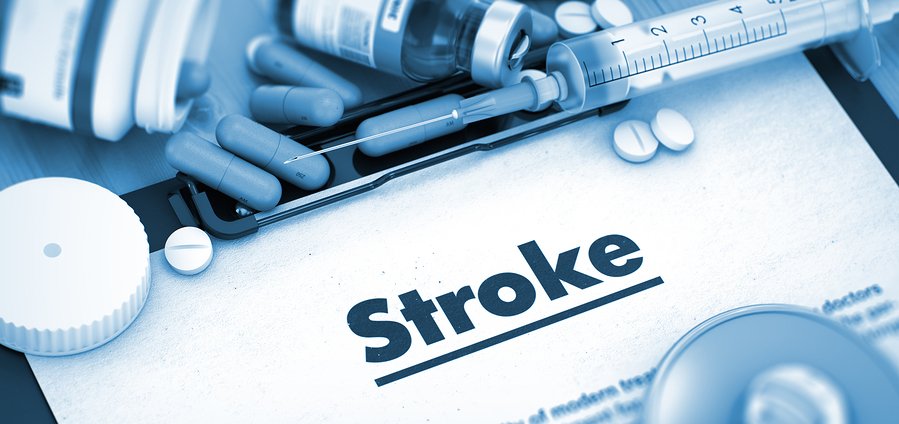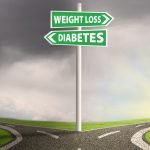As you are probably aware, if you’ve ever visited a nursing home or other long-term care facility, or watched any medical drama on TV, having a stroke can bring on terrible impairments. But as much as we tend to think of strokes as a problem that only strikes the elderly, that’s simply not true. In fact, new research brings some very bad news for people middle-aged and younger, suggesting that their chances of developing a stroke may actually be increasing.
The study, which took place at the University of Michigan School of Public Health in Ann Arbor, found that the average age of occurrence for a first stroke has recently been getting younger.1 Miller, Sara G. “Age of First Stroke is Getting Younger, Study Finds.” Live Science. 17 November 2016. Accessed 29 November 2016. http://www.livescience.com/56911-age-stroke-declining.html.
The investigators gathered data on stroke patients already involved in a large study known as the Brain Attack Surveillance in Corpus Christi Project. For the current research, the scientists focused on a window of time from 2000 through 2012 and excluded any subjects who had experienced a stroke previously.
The researchers concentrated only on ischemic strokes in which a blood vessel to an area of the brain gets blocked by a clot, the most commonly occurring types of strokes. They discovered more than 3,200 participants who had suffered an ischemic stroke during this 12-year period and analyzed the medical records of each patient to determine whether any stroke risk factors were present. The results clearly showed that overall incidence of strokes had declined in just over a decade and that the age of first stroke had dropped by two years. The average age of a first stroke occurring was 71.7 in 2000, and it fell to 69.3 in 2012.
And yes, at first glance it appears to be good news that the incidence is dropping and that it’s still a problem confined to the elderly. But there’s a frightening secret hiding behind the headlines, which, as usual, don’t always tell the full story. The headlines promoted only the fact that the rate of strokes has been decreasing for some time in the United States, which may lead people to a false sense of security. The bad news is that while the overall rate has declined, stroke rates have not dropped in people younger than 65, and in fact are on the rise in those younger than 55. A 2011 study at the Centers for Disease Control and Prevention in Atlanta, Georgia found that stroke rates have been increasing in both men and women between the ages of 15 and 44, as well as in children as young as five.2 George, Mary G.; et al. “Trends in stroke hospitalizations and associated risk factors among children and young adults, 1995-2008.” Annals of Neurology. 2 September 2011. Accessed 30 November 2016. http://onlinelibrary.wiley.com/doi/10.1002/ana.22539/abstract.
So why, if we appear to be improving these statistics among senior citizens, are they worsening for the rest of us? The positive side is that older folks are likely more aware of the risks and are doing what they can to lower their odds of having a stroke, including quitting smoking. But the negative side is that way too many people under the age of 65 have been increasing their risk factors for stroke, ignoring those added risks, and are often paying the price.
The researchers discovered that certain stroke risk factors became more common during the period of the study. Type 2 diabetes, high blood pressure, and atrial fibrillation (an irregular heart rhythm that can lead to heart problems) all were on the rise among the volunteers over the years considered, and each of these problems can elevate the chance of having a stroke.
More than 795,000 people in the U.S. annually experience a stroke, according to the Centers for Disease Control and Prevention. And approximately three-quarters of these are first-time strokes. What’s more, stroke is a leading cause of long-term disability. Some of the devastating neurological effects of strokes such as speech and language difficulties and paralysis, the possibility of health problems that could stretch for decades, and the impact on quality of life should be enough to make more of us take this seriously.
To lower your stroke risk, start by losing excess weight. This can help you improve your blood sugar levels and prevent diabetes as well. Eat a nutritious diet and cut out (or at least cut way back on) junk food and high-fat, sugary snacks. And if you can’t do that, you might want to consider a sugar metabolic enhancement formula to your daily regimen—to help give you some breathing room for your indiscretions. Exercise is also essential. A 2013 study led by scientists from the Harvard Medical School, the London School of Economics, and the Stanford University School of Medicine showed that physical activity is much more effective than prescribed medication in preventing death from stroke.3 Naci, Huseyin; et al. “Comparative effectiveness of exercise and drug interventions on mortality outcomes: metaepidemiological study.” BMJ. 1 October 2013. Accessed 30 November 2016. http://www.bmj.com/content/347/bmj.f5577. So dedicate a little time each day to a workout that improves both your cardiovascular fitness and strength, and you will increase your chance of living a long, healthy, stroke-free life.
References
| ↑1 | Miller, Sara G. “Age of First Stroke is Getting Younger, Study Finds.” Live Science. 17 November 2016. Accessed 29 November 2016. http://www.livescience.com/56911-age-stroke-declining.html. |
|---|---|
| ↑2 | George, Mary G.; et al. “Trends in stroke hospitalizations and associated risk factors among children and young adults, 1995-2008.” Annals of Neurology. 2 September 2011. Accessed 30 November 2016. http://onlinelibrary.wiley.com/doi/10.1002/ana.22539/abstract. |
| ↑3 | Naci, Huseyin; et al. “Comparative effectiveness of exercise and drug interventions on mortality outcomes: metaepidemiological study.” BMJ. 1 October 2013. Accessed 30 November 2016. http://www.bmj.com/content/347/bmj.f5577. |











